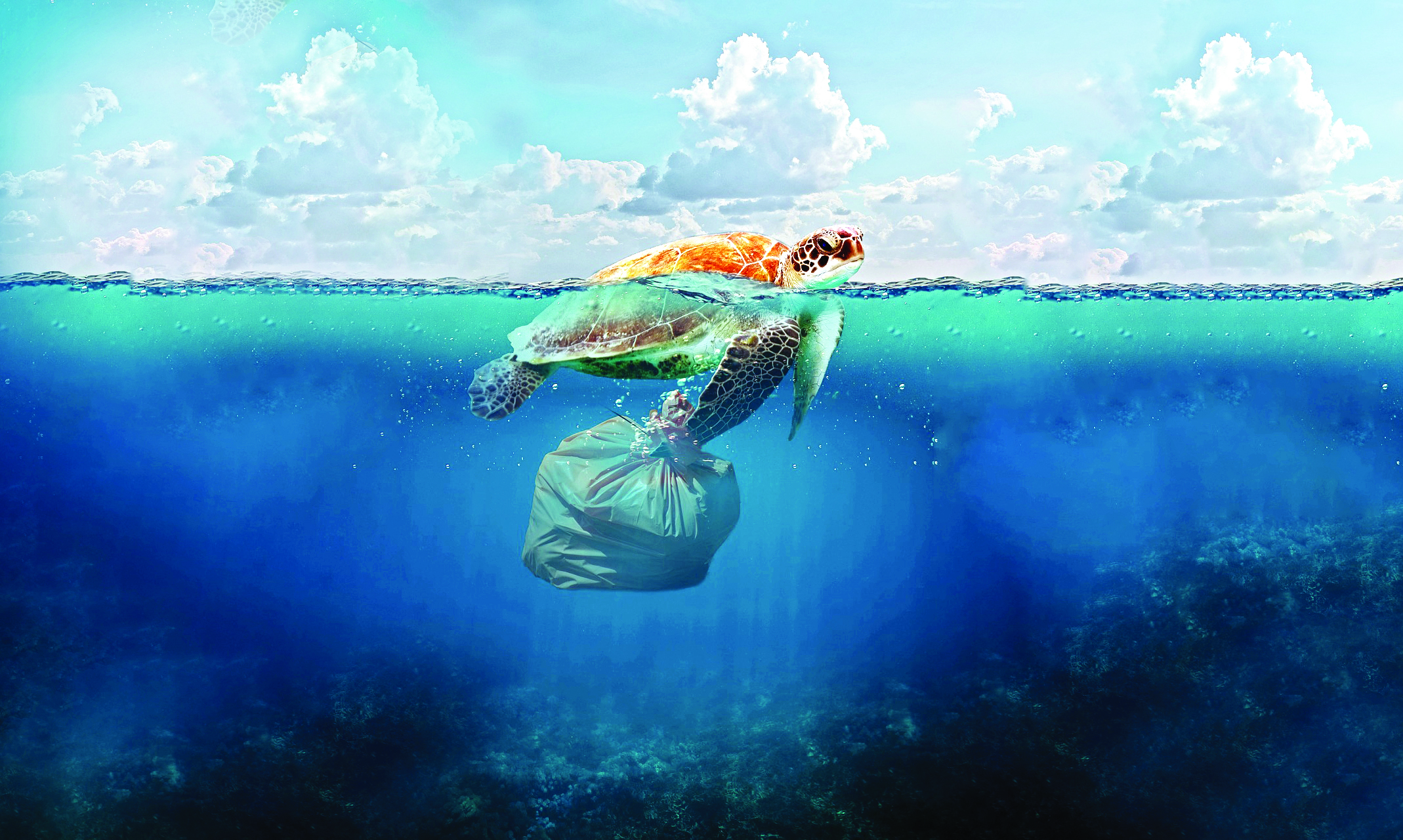Pervasive, pernicious plastics
The gravity of the theme of World Environment Day 2023 — Solutions to Plastic Pollution — can be gauged from the fact that plastic not just abounds our surrounding but has also made inroads inside the body of living organisms including humans — creating an urge for tech-based policy actions

June 5 this year will mark the completion of 50 years since the world first started celebrating World Environment Day. The slogan of 1973 — Only One Earth — remains relevant, and will continue to do so. In 2023, Côte d’Ivoire is hosting the World Environment Day in partnership with the Netherlands. The theme for this year is ‘Solutions to Plastic Pollution.’ Interestingly, five years back, India was the host and the theme was almost similar — Beat Plastic Pollution. The repetition of the theme is a sign that its urgency is not lost. Plastic pollution remains a pressing concern, and has perhaps acquired greater urgency.
An omnipresent menace
Anyone would agree that plastic is one of the most pervasive components in the world we see around us. More threateningly, it has now, in its tiny form known as microplastics, been invading invisibly into the bodies of living organisms and ecosystems.
The impact of microplastics on living organisms is a complex and multifaceted issue. From aquatic ecosystems to terrestrial environments, the pervasive presence of these tiny plastic particles has far-reaching consequences. Research is needed to fully comprehend the long-term implications for human health, and devise appropriate mitigation strategies. Only through concerted efforts, at individual and global levels, can we combat the menace of microplastics and protect the delicate balance of life on our planet.
Overall, from mountain-like landfills to the vast oceans and now living bodies, plastic is everywhere. This threat requires a scale of action that has largely been absent to date. Conservative estimates show that the global production of plastics had increased from two million tonnes in 1950 to more than 390 million tonnes in 2021. More worryingly, merely 25 per cent of the plastic produced is still in use while around 66 per cent has ended up in the environment. Given the dismal rates of recycling, this is not at all surprising.
What should concern us more is that there are hardly any signs of amelioration. Production of plastic as well as its accumulation in the environment is projected to multiply several times in the coming decades.
Beyond solutions?
However, mammoth though it seems to be, the problem of plastic pollution is solvable if the world shows enough grit and gumption on this front. Contrarily, different stakeholders, including the governments and citizens, seem to have resigned to the idea of minimising plastic pollution. In fact, the most formidable stumbling block in the path of beating plastic pollution has been the inability of humans to re-imagine life with minimised use of plastics. The ever-growing presence of plastics has been accepted by humans, even though they might be aware that the disastrous material is heading them towards a doomsday situation.
A change in approach towards plastics has become imperative, but certainly, that is not enough. It has to be backed by sound policy action and, more importantly, technological interventions.
Technology as a game-changer
Technology can go a long way in mitigating the plastic menace. In the realm of recycling and circular economy, advanced sorting techniques, like robotic systems and artificial intelligence, can enable more efficient segregation and processing of recyclable materials. Furthermore, the concept of a circular economy emphasizes the importance of designing products with recyclability in mind, thereby reducing waste generation and maximizing resource utilization. This can also be achieved through designing specific technologies.
Innovative packaging, which has already shown impressive signs, can be leveraged to reduce plastic pollution significantly. Companies are experimenting with biodegradable and compostable materials derived from plant sources, such as seaweed or corn-starch. Edible packaging, made from materials like gelatin or algae, is also gaining traction. These alternatives offer the convenience of traditional packaging while being environmentally friendly. It is the responsibility of the government to diffuse these innovations in society for meaningful gains. Corporates, too, can step in with economically viable plans that won’t result in losses for them.
Furthermore, to address the vast amounts of plastic already polluting our oceans, innovative clean-up technologies are being deployed. One such solution is the development of autonomous floating devices that harness the power of ocean currents to collect plastic waste. These devices use advanced sensors and artificial intelligence to navigate and gather debris efficiently. Other initiatives focus on designing passive systems that use natural ocean currents to gather plastics into concentrated areas for removal. By combining technology and scientific expertise, these endeavours offer hope for restoring the health of our oceans.
Conclusion
To sum up, plastic pollution indeed poses a threat of gargantuan proportions, but with political will, public awareness and innovative use of technology, it can be kept under check. People, too, need to believe that they can reimagine their lives with minimal use of plastics in the greater interest of the planet Earth, as well as to save themselves and posterity!
Views expressed are personal




